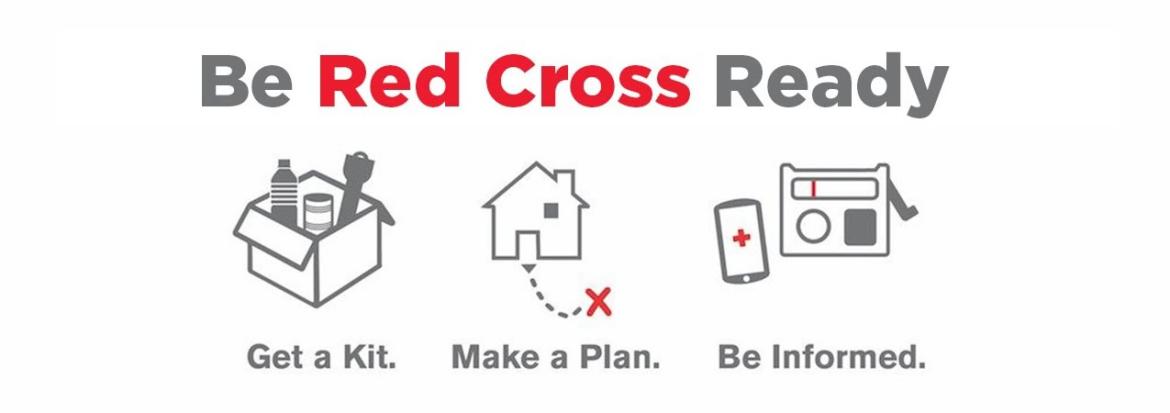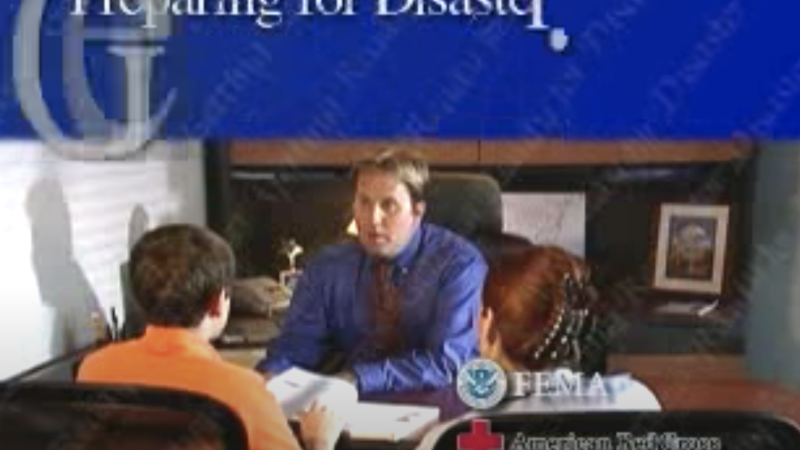Get a Kit
Here are some key items you might need in an evacuation. Store them in an easy-to-carry container such as a backpack or duffle bag.
- Water - A supply of water (one gallon per person per day). Store water in sealed, unbreakable containers. Identify the storage date and replace it every six months.
- Food - A supply of non-perishable packaged or canned food and a non-electric can opener.
- First aid kit and prescription medications.
- Emergency blankets or sleeping bags.
- A change of clothing and sturdy shoes
- flashlight
Links to creating a kit to meet your specific needs:
- Prepare an Emergency Supply Kit – CA Department of Public Health
- Anatomy of a First Aid Kit – American Red Cross
- Your Family Disaster Supplies Kit - FEMA
Jamie Lee Curtis builds a preparedness kit as part of the American Red Cross "Do More Than Cross Your Fingers" campaign


Make a Plan
Before an emergency happens
- Learn the evacuation areas, routes and exits for your building and your department’s designated Emergency Assembly Area (EAA). Click on the "SA Evacuation Routes" pull down menu above to find your building's EAA. If an evacuation becomes necessary, going to your EAA is vital not only for your safety, but because it allows departmental coordinators to conduct a “role call” and identify who may be missing
- Review the UCLA Vehicle Evacuation Plan in case a general evacuation of the UCLA campus is necessary.
- You may not be with your family or significant others when disaster strikes, so it is important to plan in advance by asking these questions: How will you contact one another; How will you get back together; and What you will do in different situations? The links below will help you develop your home/off-campus emergency plan.
Links
- Student Affairs Emergency Plans
- Make A Plan – Ready.gov (provides very specific steps)
- Make a Plan – American Red Cross (more general overview)
- Plan for Emergencies - FEMA
Emergencies can strike quickly and without warning. They can force you to evacuate your work or neighborhood. What would you do if basic services--water, gas, electricity or telephones--were cut off?
Be Informed
Staying informed has three parts:
- Learn the evacuation areas, routes and exits for your building and your department’s designated Emergency Assembly Area (EAA). Click on the "SA Evacuation Routes" pull-down menu above to find your building's EAA. If an evacuation becomes necessary, going to your EAA is vital not only for your safety, but because it allows departmental coordinators to conduct a “role call” and identify who may be missing
- Review the UCLA Vehicle Evacuation Plan in case a general evacuation of the UCLA campus is necessary.
- You may not be with your family or significant others when disaster strikes, so it is important to plan in advance by asking these questions: How will you contact one another; How will you get back together; and What you will do in different situations? The links below will help you develop your home/off-campus emergency plan.
1. Getting information during a Disaster

- You can receive alerts via email and text message with official information during an emergency. Click on the link above to “sign in” and “sign-up” for service using your UCLA LOGON.
2. Know more about potential disasters effecting your region
- Learn About Natural Hazards In Your Neighborhood
- Dare to prepare
- California Office of Emergency Services (OES)
- Possible Hazards and Emergencies Worksheet - Use this worksheet to identify potential hazards and create a plan to reduce your family's risk.
3. Action Steps for learning preparedness skills
Here is a brief 3-minute review by FEMA of the emergency preparedness process ending with how to "Get Informed"



